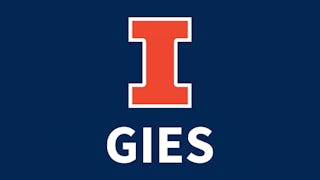When an investor is faced with a portfolio choice problem, the number of possible assets and the various combinations and proportions in which each can be held can seem overwhelming. In this course, you’ll learn the basic principles underlying optimal portfolio construction, diversification, and risk management. You’ll start by acquiring the tools to characterize an investor’s risk and return trade-off. You will next analyze how a portfolio choice problem can be structured and learn how to solve for and implement the optimal portfolio solution. Finally, you will learn about the main pricing models for equilibrium asset prices.

Enjoy unlimited growth with a year of Coursera Plus for $199 (regularly $399). Save now.

Portfolio Selection and Risk Management
This course is part of Investment and Portfolio Management Specialization

Instructor: Arzu Ozoguz
44,685 already enrolled
Included with
(630 reviews)
Skills you'll gain
Details to know

Add to your LinkedIn profile
See how employees at top companies are mastering in-demand skills

Build your subject-matter expertise
- Learn new concepts from industry experts
- Gain a foundational understanding of a subject or tool
- Develop job-relevant skills with hands-on projects
- Earn a shareable career certificate

There are 5 modules in this course
This module introduces the second course in the Investment and Portfolio Management Specialization. In this module, we discuss one of the main principles of investing: the risk-return trade-off, the idea that in competitive security markets, higher expected returns come only at a price – the need to bear greater risk. We develop statistical measures of risk and expected return and review the historical record on risk-return patterns across various asset classes.
What's included
10 videos11 readings3 assignments1 peer review
In this module, we build on the tools from the previous module to develop measure of portfolio risk and return. We define and distinguish between the different sources of risk and discuss the concept of diversification: how and why putting risky assets together in a portfolio eliminates risk that yields a portfolio with less risk than its components. Finally, we review the quantitative tools that help us identify the ‘best’ portfolios with the least risk for a given level of expected return by considering a numerical example using international equity data.
What's included
16 videos12 readings4 assignments2 peer reviews1 discussion prompt
In this module, we describe how investors make choices. Specifically, we look at how utility functions are used to express preferences. We review measures to describe investors’ attitude towards risk. Finally, we discuss how we can summarize investors’ preferences using a specific utility function: mean-variance preferences.
What's included
7 videos7 readings3 assignments
In this module, you will learn about mean-variance optimization: how to make optimal capital allocation and portfolio choice decisions when investors have mean-variance preferences. This was one of the ground-breaking ideas in finance. We will formally set up the investor’s portfolio choice problem and learn step-by-step how to solve for the optimal allocation and risky portfolio choice given a set of risky securities. You will also have an opportunity to apply these techniques to a numerical example. This module is slightly more technical than the others. Stick with it… you will not regret it!
What's included
10 videos12 readings2 assignments1 peer review
In this module, we build on the insights obtained from modern portfolio theory to understand how risk and return are related in equilibrium. We first look at the main workhorse model in finance, the Capital Asset Pricing Model and discuss the expected return-beta relationship. We then turn our attention to multi-factor models, such as the Fama-French three-factor model.
What's included
9 videos7 readings2 assignments
Earn a career certificate
Add this credential to your LinkedIn profile, resume, or CV. Share it on social media and in your performance review.
Instructor

Offered by
Explore more from Finance
 Status: Preview
Status: Preview Status: Free Trial
Status: Free TrialUniversity of Geneva
 Status: Free Trial
Status: Free TrialColumbia University
 Status: Free Trial
Status: Free TrialUniversity of Illinois Urbana-Champaign
Why people choose Coursera for their career




Learner reviews
630 reviews
- 5 stars
72.69%
- 4 stars
20.31%
- 3 stars
3.33%
- 2 stars
1.58%
- 1 star
2.06%
Showing 3 of 630
Reviewed on Apr 1, 2021
Very strong concepts on how to diversify risk and how to find the optimal portfolio
Reviewed on Apr 7, 2021
It's an excellent course, but in my opinion this kind of courses need more examples to be more comprehensive and friendly to the people en general.
Reviewed on Nov 10, 2018
This is the most informative in depth short course i ever across. Learned a lot!
Frequently asked questions
To access the course materials, assignments and to earn a Certificate, you will need to purchase the Certificate experience when you enroll in a course. You can try a Free Trial instead, or apply for Financial Aid. The course may offer 'Full Course, No Certificate' instead. This option lets you see all course materials, submit required assessments, and get a final grade. This also means that you will not be able to purchase a Certificate experience.
When you enroll in the course, you get access to all of the courses in the Specialization, and you earn a certificate when you complete the work. Your electronic Certificate will be added to your Accomplishments page - from there, you can print your Certificate or add it to your LinkedIn profile.
Yes. In select learning programs, you can apply for financial aid or a scholarship if you can’t afford the enrollment fee. If fin aid or scholarship is available for your learning program selection, you’ll find a link to apply on the description page.
More questions
Financial aid available,
¹ Some assignments in this course are AI-graded. For these assignments, your data will be used in accordance with Coursera's Privacy Notice.





